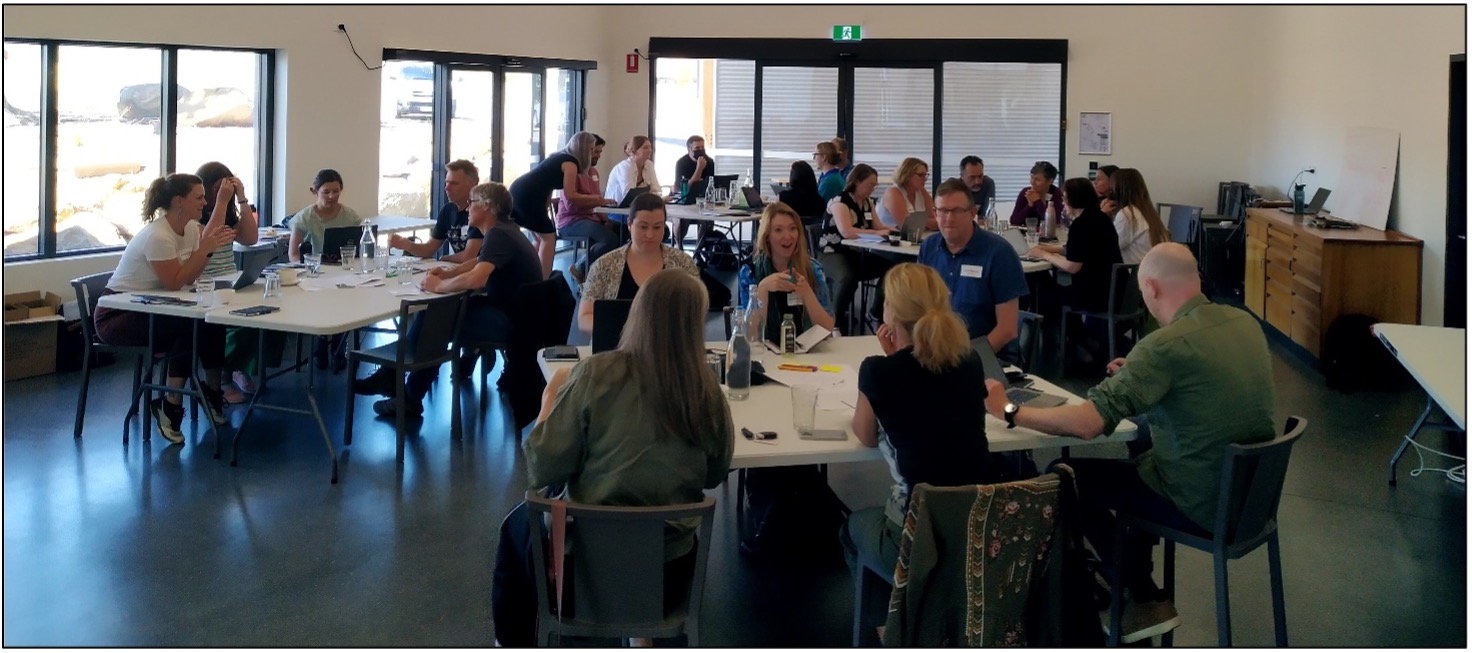Conservation genomics in ACTion

Genomic technologies often form part of conservation management strategies and action plans, and have promise for informing decision-making. Yet, decision-making processes typically require the integration of multiple data sources and types, the allocation of sufficient resources, and a feasible structure to determine an appropriate course of action. Integration of genomic information with this diverse range of issues is not always straightforward, and sometimes the contribution of genomics to decision making can fall short of expectations.
This CBA Synthesis Group workshop brought together representatives from government and non-government conservation organisations, research institutions and universities to discuss shortfalls in, and options to improve, the integration of genetic/genomic information with decision-making processes for biodiversity conservation and management. It aimed to:
- Identify the issues faced by decision-makers in obtaining and including genomic information in the decision-making process for species management/monitoring actions
- Develop approaches that enhance collaboration and communication between researchers and practitioners in application of genomic information
- Derive broad best practice principles to improve application and integration of genetic/genomic tools/information into decision making that informs management actions.
Day 1 was focused on discussing current practices and case studies:
- Experiences in applying genomics: An overview of how different organisations applied genomic information and tools, highlight positives and areas where additional work could improve the translation of data into on the ground actions. Talks from Margret Byrne (Biodiversity and Conservation Science, Department of Biodiversity, Conservation and Attractions, WA), Marissa Parrott (Zoos Victoria) and Kim Miller (Healesville Sanctuary), Sarah May (ACT Parks and Conservation Service), Jennifer Pierson (Australian Wildlife Conservancy), Rebecca Spindler (Bush Heritage) and Genevieve Hayes (Arid Recovery).
- Genomic resources: Outlined the approaches and tools that have or are being developed to improve (i) data generation through analysis tools; and (ii) consideration of genetic issues and translation of genomic data through guidance and standardisation of information and metrics. Talks from Paul Sunnucks, Carolyn Hogg (University of Sydney), Maurizzio Rossetto (Royal Botanic Garden Sydney), Linda Neaves (Australian National University), Robyn Shaw (Department of Biodiversity, Conservation and Attractions, WA) and Catherine Gruber (University of Sydney).
- Working together: Summarised experiences of both research providing advice and those responsible for implementing recommendations to actions on the ground. Several case studies were used to highlight co-design and collaborations including Canberra earless dragon, helmeted honeyeater, desert quandong and burrowing bettong (boodie). Talks from Caroline Chong (Flora and Fauna Division, Northern Territory government), Kym Ottewell (Department of Biodiversity, Conservation and Attractions, WA), Stephen Sarre (University of Canberra), Paul Sunnucks (Monash University).
Breakout discussion groups during the day also provided opportunities to capture shared experiences by other members of workshop, focussing on the challenges that still need to be faced in using genomic data to inform conservation and collaborative strategies for generating and managing genomic data to ensure if is useful for informing actions on the ground.
Day 2 targeted discussion towards how to move forward and refining potential outputs for the workshop.
Breakout groups for the first part of the day separated topics into those where there was general agreement and whether that was positive or negative, as well as aspects where improvement was required and how this could be achieved. In the second session of the day, the entire group worked through a draft summary of the previous session to identify key areas, principles and actions to be drafted into the outputs:
- Recognize genetics as a core requirement for effective biodiversity conservation.
- Respect the sovereignty of Indigenous peoples and engage them in all aspects of conservation planning and management.
- Facilitate agreement and cooperation between state, territory, and commonwealth governments on the way forward for genetic conservation.
- Engage and educate stakeholders and the public on the role of genomics and collaboration in conservation
- Collaborate with stakeholders and co-design projects to ensure meaningful engagement and input and ensure transfer knowledge across generations and stakeholders.
- Identify when a geneticist is needed and when first-principles are enough to avoid extinction through unassessed fear of unintended consequences or inaction.
- Recognise that inaction is an action with consequences. Concern of actions to promote diversity can have negative effects but often the risks of extinction associated with doing nothing are greater.
- Promote shared infrastructure to break down barriers and promote multi-use of resources and implement mechanisms for the storage and access of samples for genetic analysis.
- Incorporate genetics and translocation work into restoration planning and emphasize interconnectivity of different management areas.
- Monitor for early detection of change and practice adaptive management to continually improve conservation practices based on new knowledge and experience and communicate appropriate practices for emerging conservation entities.
Planned outputs:
- Submission to Australia’s science and research priorities: conversation starter.
- Position statement.
- Guidance which would support and explain the position statement in more detail.
- Paper synthesising issues identified in the workshop and the guidance.
